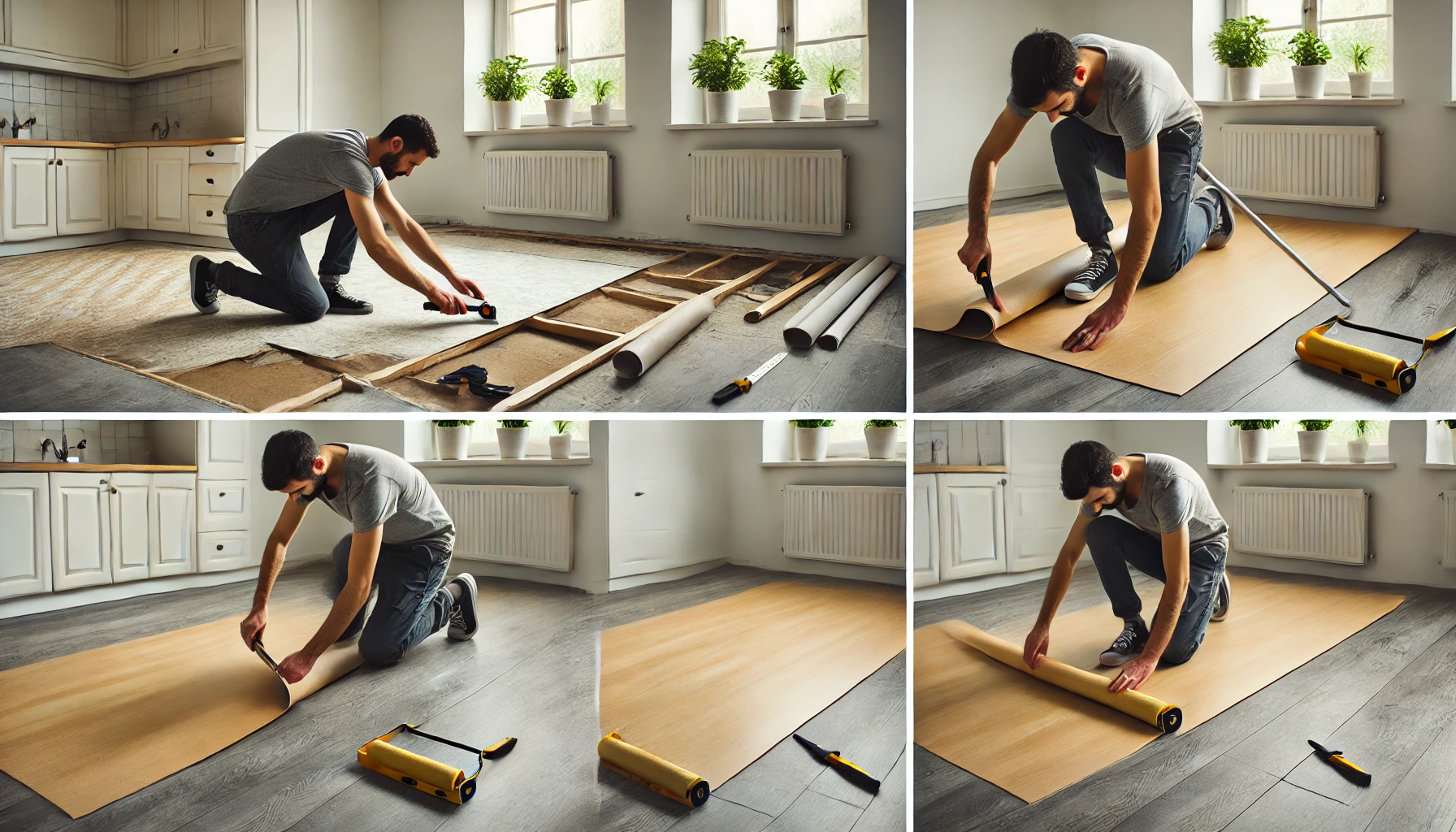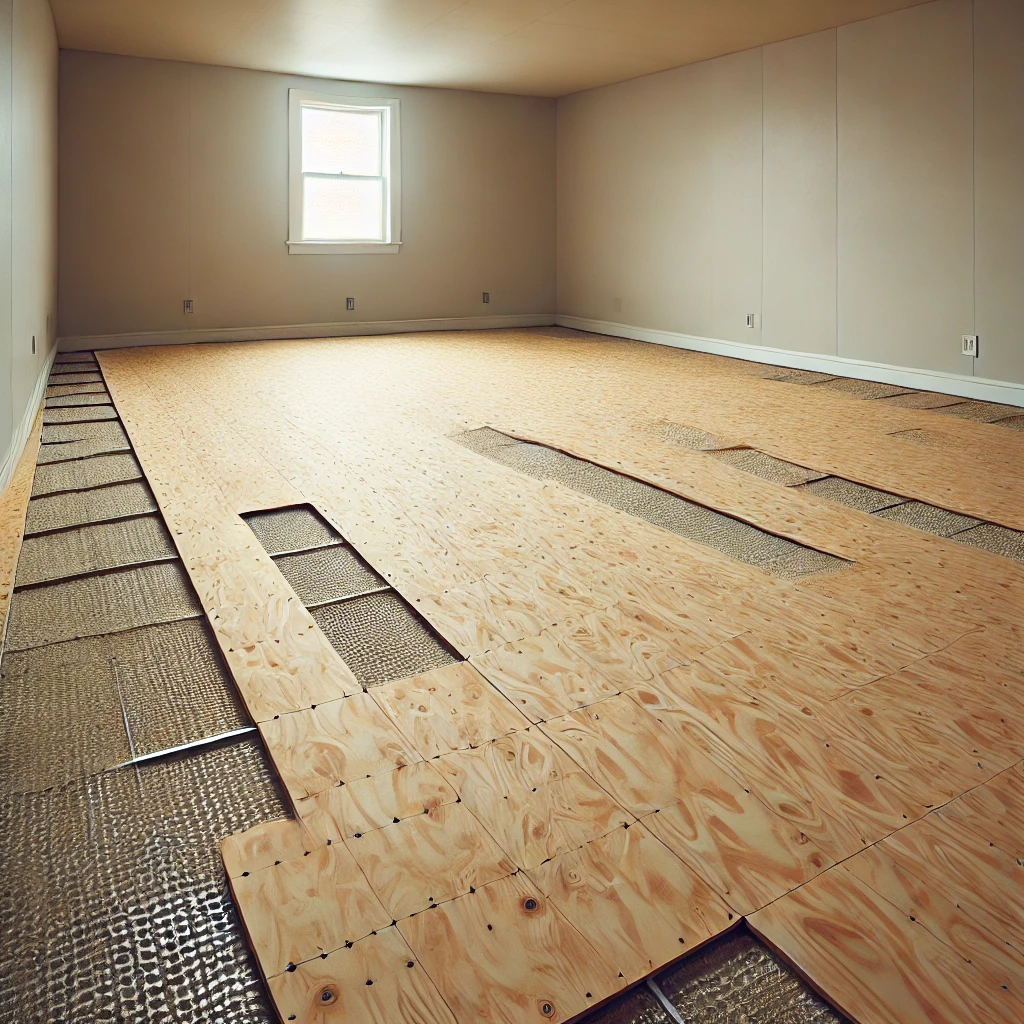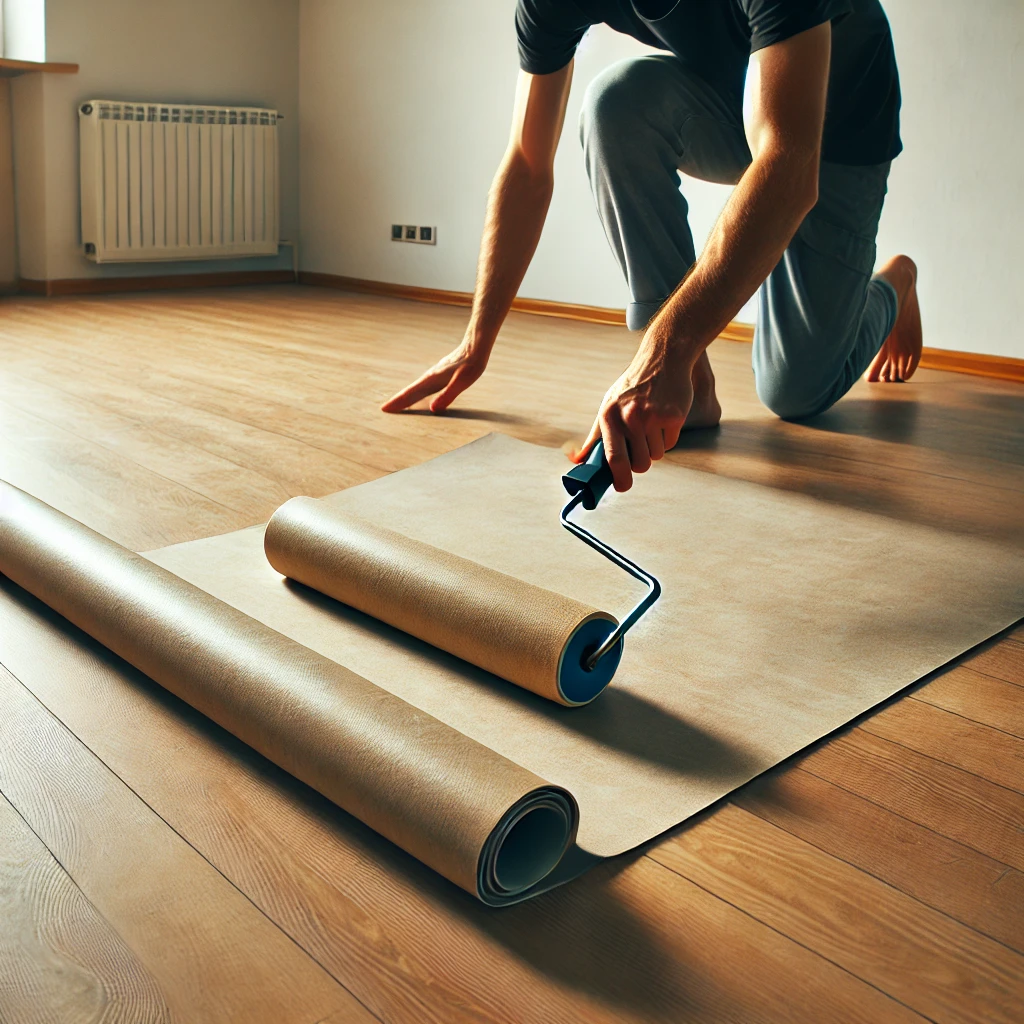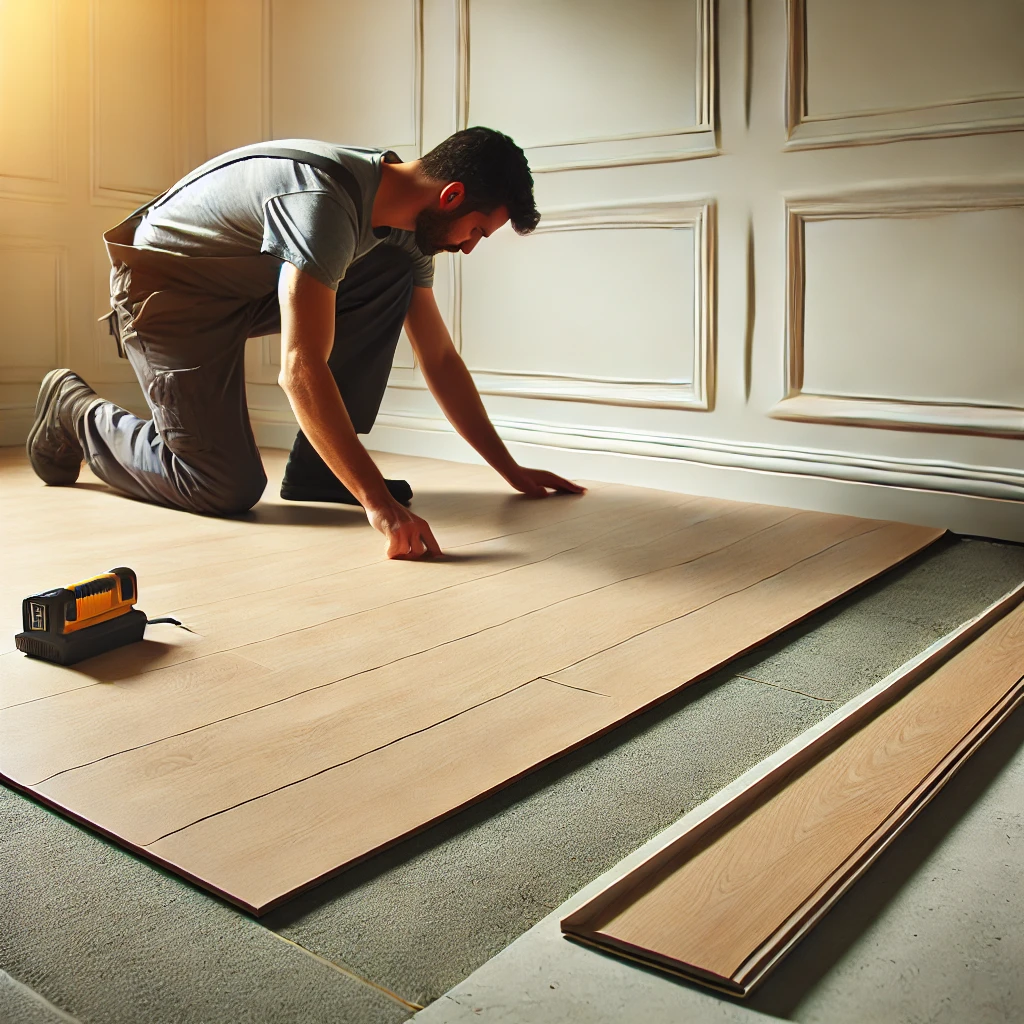Nowadays, home renovation has become not just a way to update the interior, but also an opportunity to show yourself, your skills and creative potential. Laying linoleum is one of those tasks that can be performed independently without resorting to the services of professionals. This article will be your reliable assistant in this simple, but demanding process.
We will tell you about all the nuances and subtleties of laying linoleum, starting from the choice of material and ending with the final touches. You will learn how to prepare the surface, how to cut the material correctly and how to ensure its durability and aesthetic appearance. We will also provide you with useful tips and recommendations from professionals that will help you avoid common mistakes.
Get ready for the fact that after reading this article, you will not only be able to lay linoleum yourself, but also proudly say: “I did it myself!” Let’s get started!
Linoleum: from the origins to the present
The history of linoleum
Linoleum as we know it today was first invented in the late 19th century. This happened thanks to the efforts of the English inventor Frederick Walton, who in 1860 patented a new material called “linoleum”. The basis for it was linseed oil (hence the name – “linum”, the Latin name for flax, and “oleum”, oil) and cork. The new coating was cheap, durable and easy to care for, which immediately made it popular in Europe and America.

Linoleum came at the beginning of the 20th century. However, its mass distribution began much later, in the Soviet period. At that time, linoleum became a symbol of accessibility and practicality, especially in conditions of shortage of natural materials. In Soviet Russia, the production of linoleum was established at several large factories, which made it possible to ensure the availability of this coating for the general public.
Since then, linoleum has continued to evolve, becoming increasingly high-quality, environmentally friendly and diverse in design. Modern technologies make it possible to create linoleum that imitates natural wood, stone and even ceramic tiles, which makes it a popular choice in the interior of not only residential premises, but also commercial spaces.
Pros and cons of popular coverage
Advantages:
- Ease of installation. One of the key advantages of linoleum is its ease of installation. Due to its flexibility and maneuverability, linoleum can be laid even in rooms of complex shape. This makes it ideal for DIY enthusiasts.
- Durability and wear resistance . Modern linoleums are produced in such a way as to withstand high loads and a long service life. They are resistant to abrasion, do not lose their properties under the influence of moisture and do not deform from furniture.
- Ease of care. Linoleum does not require special care. Regular wet cleaning is enough to keep the floor covering looking like new. It is also resistant to most household stains.
- Waterproof . Water resistance makes linoleum an ideal choice for kitchens, bathrooms and other wet areas. This property also provides additional protection against spills and moisture.
- Variety of design. Linoleum offers a wide range of colors and patterns, including imitation of natural materials, which allows you to fit it into any interior.
- Economy . Compared to other floor coverings, linoleum is one of the most affordable options, making it a popular choice for those on a budget.
Disadvantages:
- Sensitivity to damage . Linoleum can be prone to scratches and gouges from sharp objects or heavy furniture.
- Fading under the influence of the sun . Direct sunlight can cause linoleum to fade or change color over time.
- Reaction to temperature fluctuations. Linoleum can expand and contract in extreme temperatures, potentially warping the flooring. This is especially true for rooms where the temperature can vary significantly.
- Environmental issues . Some types of linoleum may contain phthalates and other chemicals that cause environmental and health concerns. However, there are many eco-friendly options on the market now.
- Feeling underfoot. Compared to natural materials such as wood, linoleum may seem less warm and comfortable. This can be especially noticeable in the cold season.
- Service life compared to some alternatives . Despite its durability, linoleum may require replacement sooner than more expensive floor coverings such as ceramic tile or natural wood.
- A decrease in real estate value is possible. In some cases, the use of linoleum can be perceived as a cheaper and less attractive option, which can affect the overall perception and value of the property.

How to choose the right linoleum
When choosing linoleum, it is important to pay attention to a number of technical characteristics and parameters that will ensure the durability, comfort and safety of your floor covering. Here are the main aspects to pay attention to:
- Linoleum thickness. It can vary from 1.5 to 5 mm. 2-3mm linoleum is usually suitable for residential use, while 3-5mm linoleum is recommended for high-traffic commercial premises.
- Wear-resistant layer. This layer protects the linoleum from wear and damage. In residential premises, it is recommended to use linoleum with a wear-resistant layer of at least 0.2-0.3 mm, and for public places – at least 0.6 mm.
- Load class . Linoleum is classified by usage classes from 21 to 34, with 21-23 suitable for low-traffic domestic use and 31-34 for high-traffic commercial use. Choose a class according to the expected load.
- Anti-slip properties. They are especially important for rooms with high humidity. Pay attention to the presence of an anti-slip coating and its adhesion coefficient, which should not be lower than R9.
- Thermal conductivity. If you plan to use a “warm floor” system under linoleum, choose a material with good thermal conductivity. The coefficient of thermal conductivity must be specified by the manufacturer.
- Resistance to chemicals. For the kitchen and bathroom, choose linoleum that is resistant to household chemicals and stains.
- Environmental friendliness. Check if the linoleum contains harmful substances such as phthalates. Eco-friendly options are better for health and the environment.
- Design and color . In addition to technical characteristics, consider the aesthetic side. Choose a color and design that matches the overall style of your interior. Notice how linoleum imitates other materials (such as wood or stone) and how natural this imitation looks.
- Sound insulation properties . If noise insulation is important to you, choose linoleum with good sound absorption. This is especially true for multi-apartment buildings.
- Certificates of quality and safety . Make sure that the product has the appropriate certificates confirming its quality and safety.
Finally, do not forget that cheap linoleum can be less durable and have worse performance characteristics. Investing in a quality product will provide you with comfort and long-term savings on floor covering repairs and replacements.
A step-by-step guide to self-laying linoleum
Laying linoleum with your own hands is a completely feasible task, but it requires attention and accuracy. Here’s a step-by-step guide to help you successfully complete this task.

Stage 1. Preparation of tools and materials
Before you start, make sure you have everything you need:
- Linoleum;
- A sharp knife for cutting linoleum;
- Roulette, level, pencil for marking;
- Special glue for linoleum;
- Roller or brush for rolling linoleum;
- Plinths and corners for designing joints and corners.
Stage 2. Preparation of the base
- The base must be flat, dry and clean. If necessary, putty the cracks and level the surface.
- If the base is a wooden floor, check for creaking boards and fix them if necessary.
- Remove dust and dirt from the surface.
Stage 3. Acclimatization
- Spread a roll of linoleum in the room and leave it there for 24 hours. This will allow the material to adapt to the conditions of the room.
Stage 4. Marking and cutting
- Lay the linoleum on the floor, leaving allowances on the walls of about 5-10 cm.
- Carefully cut the material where it adjoins the walls, corners and protrusions, using a tape measure and a marking pencil.
- Make sure that the linoleum lays without waves.
Stage 5. Applying glue
- Bend half of the linoleum and apply glue to the base with a spatula.
- Carefully spread the linoleum on the glued surface, gently pressing it to avoid air bubbles.
- Repeat the same with the other half of the linoleum.

Stage 6. Rolling of linoleum
- Run a roller or brush over the entire surface of the linoleum to ensure an even fit to the substrate and to eliminate air bubbles.
Stage 7. Trimming excesses
- If there are excess linoleum near the walls after gluing, carefully cut them with a sharp knife, making sure that the cut is even and neat.
Stage 8. Designing joints and corners
- Install plinths and corners to close the joints between the linoleum and the walls. This will not only improve the appearance, but also protect the edges of the linoleum from damage.
Stage 9. Final inspection and maintenance
- After laying, let the glue dry for a day before starting to use the surface.
- Carry out wet cleaning regularly and avoid the use of abrasive products to preserve the appearance and extend the service life of linoleum.
Additional tips:
- When cutting linoleum, always make a small margin to avoid mistakes.
- If you are laying linoleum in a large room, make sure that the seams between the strips of material are as tight and even as possible.
- Use knee pads or protective clothing to ensure comfort while working.
Following these instructions will help you to lay linoleum independently and qualitatively, transforming your space and saving on the services of professionals.
Safety of using linoleum in residential premises
The safety of using linoleum in an apartment is an important aspect that should be considered when choosing a floor covering. Linoleum, as a popular floor covering, offers a number of advantages, but it is also important to be aware of potential risks. Here are the main safety factors associated with using linoleum at home:
Environmental friendliness and health:
- Emissions of VOCs (volatile organic compounds). Modern linoleums are often manufactured with low VOC levels, making them safer for indoor air. Looking for products with a low VOC level or certification that confirms their environmental friendliness can reduce the risk to health.
- No phthalates. Some types of linoleum may contain phthalates, which are used to increase the flexibility of the material. However, many manufacturers now offer phthalate-free options, making them safer, especially for children’s rooms.
Fire safety:
- Fire resistance. Linoleum usually has good fire-resistant properties. It does not support combustion, which makes it a safe option in terms of fire risk.
Anti-slip properties:
- Slip prevention. Linoleum with an anti-slip surface can reduce the risk of falling and slipping, especially in areas with high humidity, such as the kitchen or bathroom.
Allergens and hygiene:
- Ease of assembly. Linoleum is easy to clean, which helps maintain room hygiene and reduces the risk of developing allergies. It is not prone to the accumulation of dust and allergens, which makes it a suitable choice for allergy sufferers and asthmatics.
Durability and safety of use:
- Linoleum is resistant to wear and tear, which means less risk of damage and unevenness that can cause tripping or falling.
- Color stability: Linoleum does not lose color under the influence of ultraviolet rays, which ensures its attractive appearance for many years.

Taking into account the above factors, it can be concluded that linoleum is a safe choice for residential premises, provided that the material is chosen correctly and the operating standards are followed. However, it is important to carefully choose products from reliable manufacturers and pay attention to quality and safety certificates. This guarantees that linoleum will not only serve for a long time and reliably, but also will not harm the health of residents and the environment.
Conclusion: linoleum is an ideal balance of quality and practicality
Summarizing all that has been said, it is safe to say that linoleum occupies a strong position in the floor covering market due to its versatility, affordability and ease of installation. Whether it is updating the interior of an apartment or decorating a commercial space, linoleum offers a wide range of solutions for any need.
We reviewed the main advantages and disadvantages of linoleum, its safety for home use, and also provided detailed recommendations for the selection and installation of this popular floor covering. This knowledge will help you make an informed choice and ensure the durability and aesthetics of your floor.
Linoleum has proven its worth as a reliable, stylish and economical flooring solution. It combines ease of care, a variety of designs and colors, which makes it suitable for any interior style. At the same time, by choosing environmentally friendly and safe linoleum options, you not only improve the appearance of your home, but also contribute to the health of your family and the environment.
By following the tips and recommendations in this article, you will be able to successfully implement a linoleum installation project, achieving excellent results with minimal effort and expense. As a result, linoleum will not only update your interior, but also bring comfort and coziness to your home for many years.